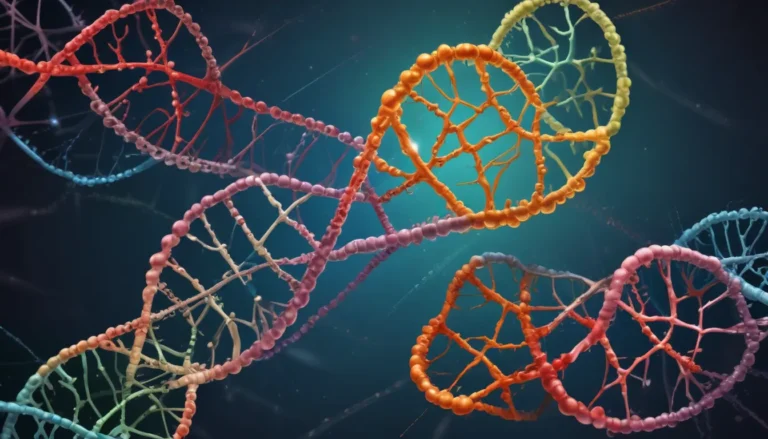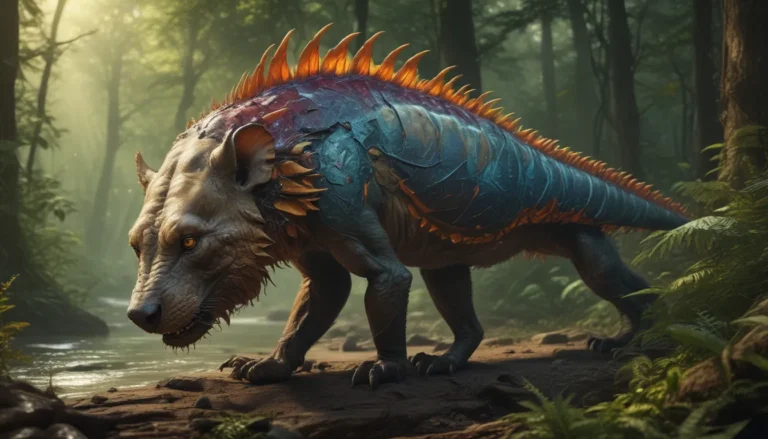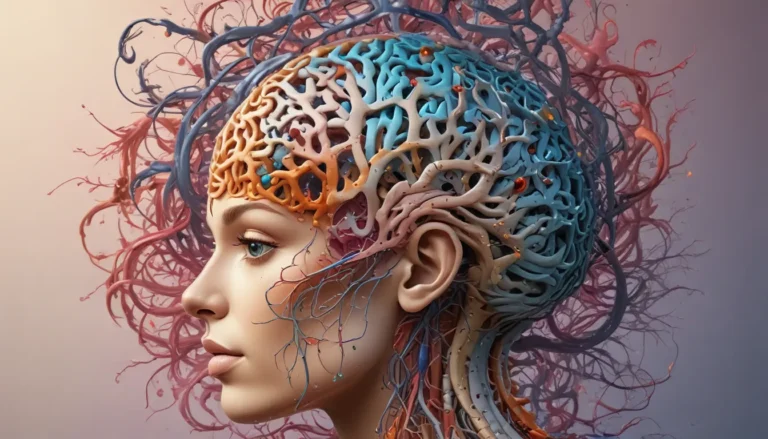A Note About Images: The images used in our articles are for illustration purposes only and may not exactly match the content. They are meant to engage readers, but the text should be relied upon for accurate information.
Welcome to the captivating world of developmental plasticity, where organisms showcase their remarkable ability to adapt and evolve in response to their environment. From altering physical traits to changing behaviors, developmental plasticity is a fascinating biological phenomenon that shapes the diversity of life on Earth. In this article, we will delve into thirteen intriguing facts about developmental plasticity, revealing the incredible adaptability and resilience of living organisms.
Understanding Developmental Plasticity
Organisms possess the remarkable capability to adjust their physical, behavioral, and physiological traits in response to environmental influences. This flexibility, known as developmental plasticity, enables organisms to thrive in changing environments by adapting to new or altered conditions in their surroundings. Factors such as temperature, light intensity, food availability, and social interactions can trigger developmental plasticity, leading to lasting impacts on an organism’s phenotype.
The Complexity of Developmental Plasticity
Developmental plasticity is not limited to physical traits but can also influence an organism’s cognitive abilities, learning capacity, and social behaviors. While environmental factors play a significant role in triggering developmental plasticity, genetic factors determine an organism’s potential to exhibit plasticity and respond to its surroundings. This intricate interplay between genetics and the environment highlights the complexity of developmental plasticity.
The Adaptive Nature of Developmental Plasticity
One of the most fascinating aspects of developmental plasticity is its adaptive nature. Organisms can adjust their traits to survive in different environments, showcasing incredible adaptability and resilience. From embryonic development to postnatal growth and even adulthood, developmental plasticity allows for continuous adaptation throughout an organism’s lifespan. This adaptive capacity not only enhances an organism’s chances of survival but also contributes to the evolution of new traits favored by natural selection.
Diverse Manifestations of Developmental Plasticity
Developmental plasticity manifests in various forms across different species. While some organisms have a higher capacity to adapt and modify their traits, others exhibit limited plasticity. Stressful environments can trigger phenotypic changes through developmental plasticity, enabling organisms to cope with challenging conditions. Plants also demonstrate developmental plasticity by altering their growth patterns, morphology, and reproductive strategies in response to environmental cues.
Implications for Human Health
Understanding the mechanisms and consequences of developmental plasticity in humans has significant implications for health and well-being. Research in this area provides valuable insights into disease susceptibility, developmental disorders, and potential therapeutic interventions. By unraveling the complexities of developmental plasticity, scientists can potentially unlock new treatments for diseases and enhance our understanding of human health.
Exploring Evolutionary Impacts
Developmental plasticity plays a crucial role in influencing the direction and pace of evolution. By providing a mechanism for organisms to respond to selective pressures, developmental plasticity drives genetic changes that can lead to evolutionary adaptations. This dynamic interplay between developmental plasticity and natural selection highlights the importance of understanding how organisms adapt and evolve in response to their environment.
Unlocking the Mysteries of Biology
The study of developmental plasticity offers a fascinating glimpse into the dynamic nature of biology. From the ability of cells to differentiate into various tissue types to the capacity of animals to alter their physical appearance based on external factors, developmental plasticity reveals the astonishing capabilities of living organisms. By delving into the intricacies of developmental plasticity, researchers can uncover new insights into how organisms adapt and survive in a constantly changing world.
Conclusion: Embracing the Marvels of Developmental Plasticity
In conclusion, developmental plasticity is a complex and intriguing field of research that continues to captivate scientists and enthusiasts alike. Its exploration not only deepens our understanding of how organisms adapt and survive but also has significant implications for medicine, conservation, and evolutionary biology. By unraveling the mechanisms behind developmental plasticity, we can unlock new treatments for diseases, enhance species’ resilience to environmental changes, and shed light on the processes that drive evolutionary adaptations.
As we journey through the wonders of developmental plasticity, we uncover the incredible adaptability and resilience of organisms to their ever-changing environments. Whether adjusting physical traits, changing behaviors, or evolving new characteristics, developmental plasticity enables organisms to thrive and survive in a dynamic world. Let us continue to explore the complexities of developmental plasticity and embrace the marvels of biology in all its intricate forms.
FAQs: Unraveling the Mysteries of Developmental Plasticity
-
What is developmental plasticity?
Developmental plasticity refers to the ability of an organism to modify its phenotype or behavior in response to changes in its environment. -
How does developmental plasticity occur?
Developmental plasticity occurs through a range of mechanisms such as genetic changes, epigenetic modifications, and responses to environmental cues. -
What are some examples of developmental plasticity?
Examples of developmental plasticity include the metamorphosis of tadpoles into frogs, the change in coloration of chameleons to blend with their surroundings, and the ability of human stem cells to differentiate into various cell types. -
Why is developmental plasticity important?
Developmental plasticity plays a crucial role in enhancing an organism’s survival and reproductive success by allowing it to adapt to fluctuating environments and changing conditions. -
Can developmental plasticity be reversed?
In some cases, developmental plasticity can be reversible, while in others, it may be irreversible depending on the specific genetic and environmental factors involved. -
How does developmental plasticity relate to evolution?
Developmental plasticity can influence the direction and pace of evolution by providing a mechanism for organisms to respond to selective pressures and drive genetic changes. -
Are all organisms capable of developmental plasticity?
No, not all organisms exhibit the same level of developmental plasticity. Some species have evolved to be more plastic in their developmental responses, while others have limited plasticity. -
Can developmental plasticity be controlled or manipulated?
Researchers are actively exploring ways to manipulate developmental plasticity for various applications, such as regenerative medicine and improving agricultural practices. -
What are some future implications of studying developmental plasticity?
The study of developmental plasticity has potential applications in fields such as personalized medicine, conservation biology, and understanding the impacts of climate change on species’ adaptability. -
How can I learn more about developmental plasticity?
Various scientific publications and research articles delve deeper into the intricacies of developmental plasticity. Academic courses and specialized programs in biology offer opportunities to study this fascinating subject and uncover its secrets.
Embark on a journey of discovery and exploration as we unravel the mysteries of developmental plasticity, showcasing the incredible adaptability and resilience of living organisms. Join us in celebrating the wonders of biology and the remarkable capabilities of organisms to thrive and evolve in response to their environment. Let the marvels of developmental plasticity inspire and captivate your curiosity as we continue to uncover the secrets of life’s intricate dance.






